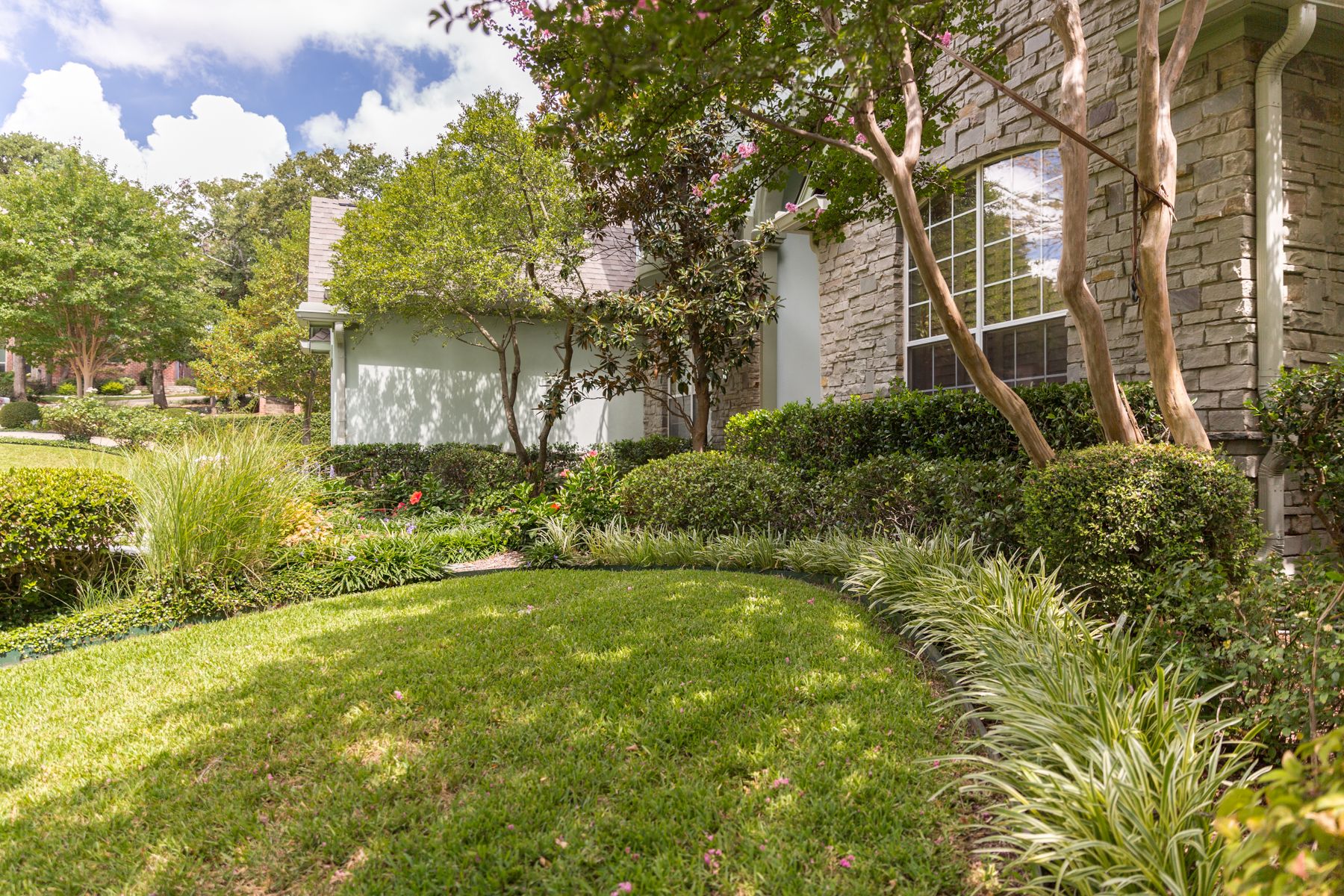
Are you struggling with growing grass in shade? If you have a property with trees, then you know it can be challenging to get your grass thick and healthy in those shaded areas. The fact is, sunlight is critical to the health of your lawn, and without it, the grass is going to naturally struggle.
Growing grass under trees often means dealing with thin or bare spots and even discoloration. You might also notice that the grass in these areas is more susceptible to weed and environmental stressors.
 We understand that you might be feeling frustrated. In fact, we often have North Texas homeowners approach us who have even received a letter from their Homeowner’s Association saying that they needed to improve the appearance of their lawn in those spots. If you’re experiencing something like this, you might feel at a loss in terms of what you can do. Fortunately, there are solutions that will help.
We understand that you might be feeling frustrated. In fact, we often have North Texas homeowners approach us who have even received a letter from their Homeowner’s Association saying that they needed to improve the appearance of their lawn in those spots. If you’re experiencing something like this, you might feel at a loss in terms of what you can do. Fortunately, there are solutions that will help.
We’ve rounded up our best tips for growing grass in shade.
Before we go any further and get into our specific tips, we want to be clear that all grass needs at least some sun to grow. Even certain shade-tolerant grass types which are often marketed to be used for growing grass under trees still need some sun.
There are a lot of misconceptions out there that can lead to false hope and we want to be quick to set you on the right path. It’s really important to have realistic expectations about what’s possible. You’ll see that our solutions are varied as we understand everyone’s wants and needs are going to be different. The conversation about how to handle shaded areas of the lawn should always begin with what you want to achieve in the long-term. If keeping the grass in those areas is important to you (and doing the best that you can with it) then that’s going to require a different approach from the homeowner who doesn’t care about the grass, they just want their yard to look its best.
As you move forward with any of these solutions, realistic expectations and your long-term goals are key.
If getting grass to grow better in shaded areas is important to you, then the most obvious solution is to try and get more sunlight to reach your property.
This can be achieved with tree pruning services designed to thin the trees as much as possible (in a way that doesn’t harm the health of the tree, of course). This should allow filtered light to start reaching some of those areas where it was lacking.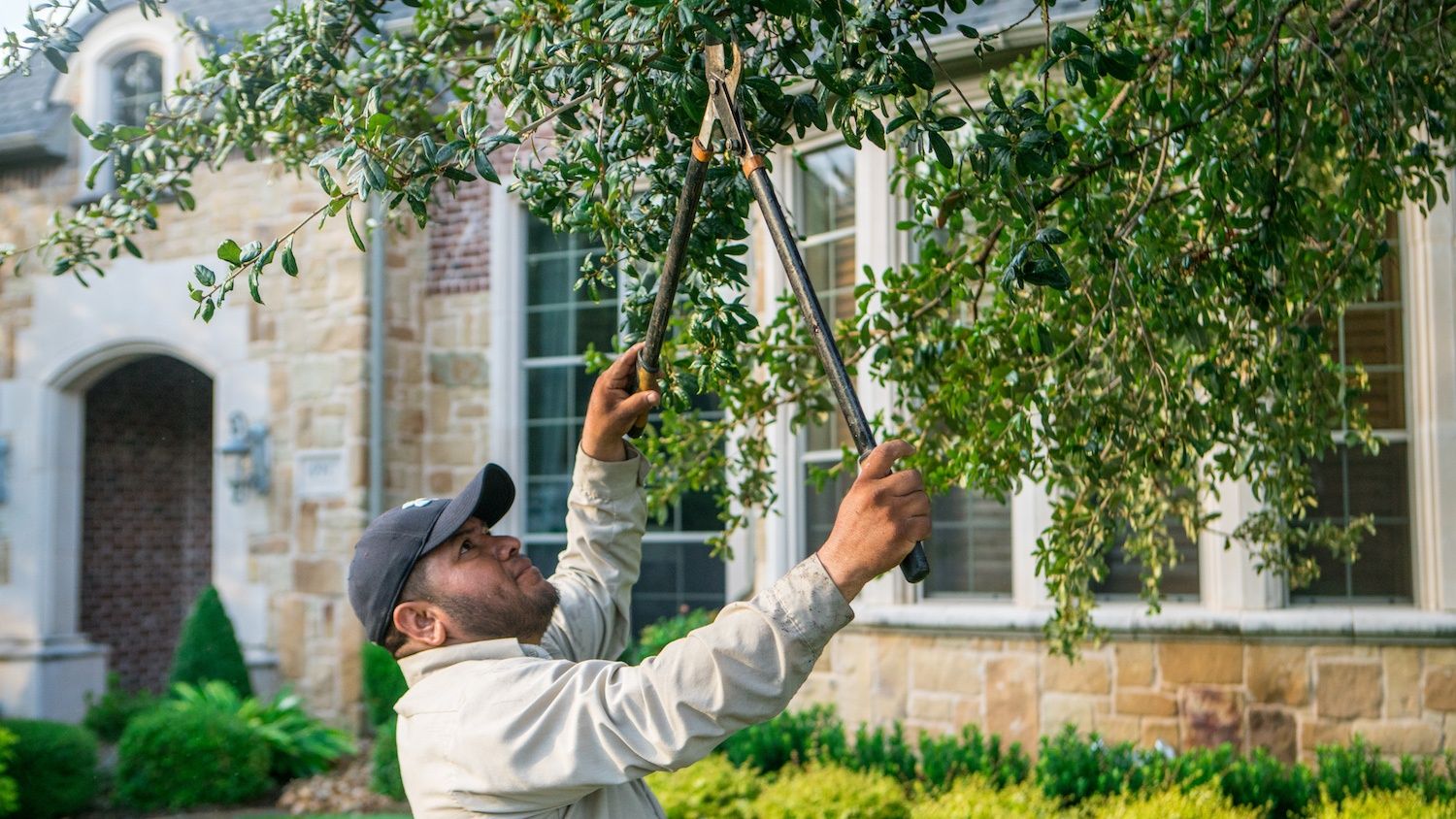
As we’re trying to help you with growing grass in shade, we’re going to perhaps ramp-up our care for areas where it’s struggling. Your lawn should already receive lawn aeration if you really care about it looking and performing its best. But that’s going to be even more important if you have grass that’s already struggling to grow because of shade.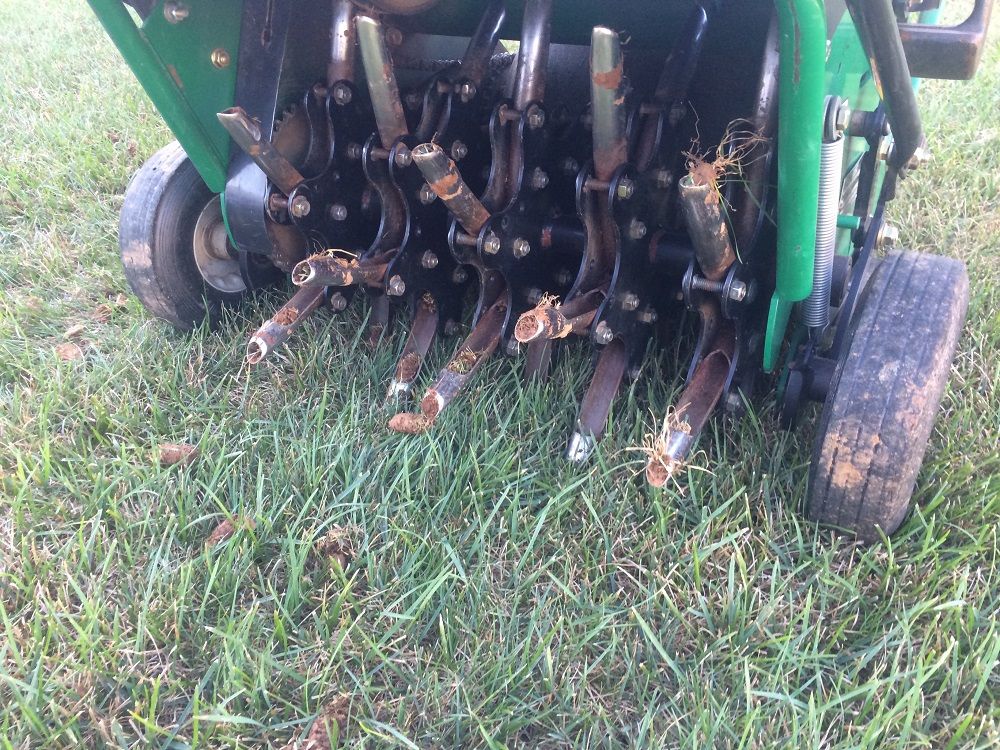
While it’s important that your entire lawn is watered properly, again, it’s going to be even more important if you have thinned out areas under trees where the grass is already struggling. The last thing that you want is for these areas to face even more hardship because of drought stress.
Finally, we might also treat weeds more aggressively in these thinned out areas where weeds are likely to invade. As you probably already know, opportunistic weeds love to take advantage of struggling grass and they’ll quickly fill in areas that are thinning out or bare due to lack of sunlight. There are certain weed types that can tolerate a lack of sun more than certain grass types can.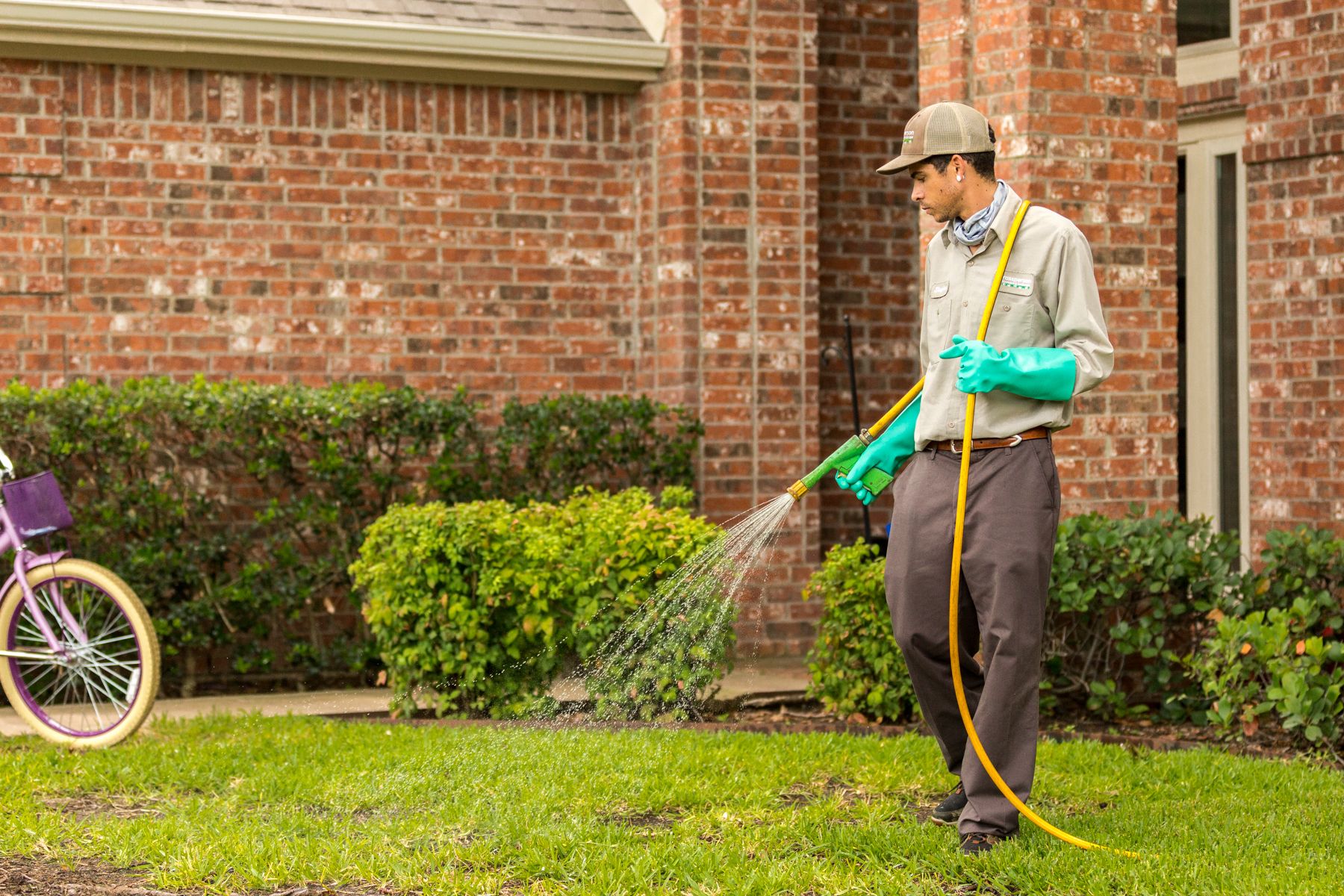
With those realistic expectations in mind (knowing that there is no such grass that doesn’t need any sun), another solution for growing grass in shade is to choose a grass type that can tolerate less sun.
In North Texas, the two most common shade-tolerant grass types are St. Augustine and Zoysia. 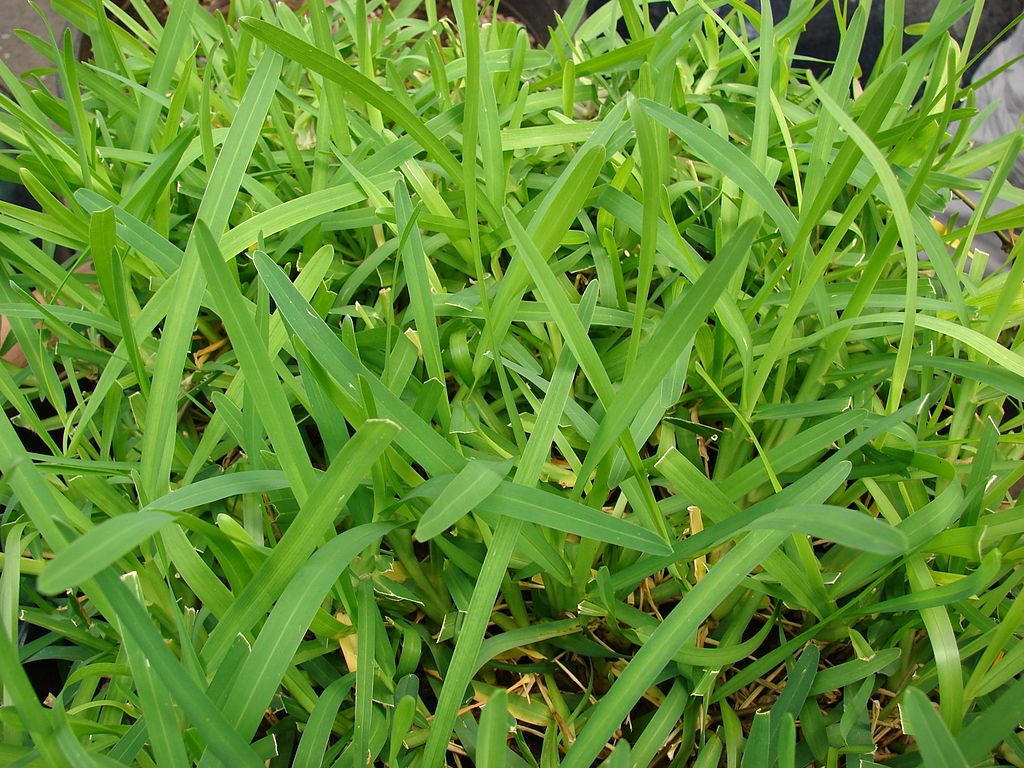
Most of the lawns that we come across which have a problem with declining grass in shaded areas are those that are Bermuda Grass. By far, this is the most common grass type in North Texas and it's a hardy grass in terms of drought-tolerance. However, it does not tolerate shade well at all. If you have a lot of trees on your property, we can guarantee that you are going to struggle with Bermuda Grass.
As we talk about trying a different grass type on your property, this is where your long-term goals are going to be critical. It’s not that easy to just replace shady areas with a new grass such as St. Augustine because it won’t take long until that grass type takes over the entire yard. St. Augustine is way more aggressive than Bermuda, and it grows horizontal, so it’s going to spread.
It’s also important to mention that Bermuda Grass looks different from other grass types and some homeowners really love their Bermuda lawn. In fact, we’ve had some clients who have told us they’d rather keep their entire lawn with Bermuda Grass and they’re prepared to re-sod those areas under the trees each year when it starts to decline. That’s also an option.
Again, it boils down to your personal goals and preferences for your lawn.
If you have a lot of shade on your property and your lawn is even struggling with a shade-tolerant grass variety, then you might want to consider a grass alternative. We can create large mulch rings around a tree using decorative stone or mulch. We could also create plant beds using shade-loving plants, rocks, or even yard art (anything that doesn’t need the sun!). 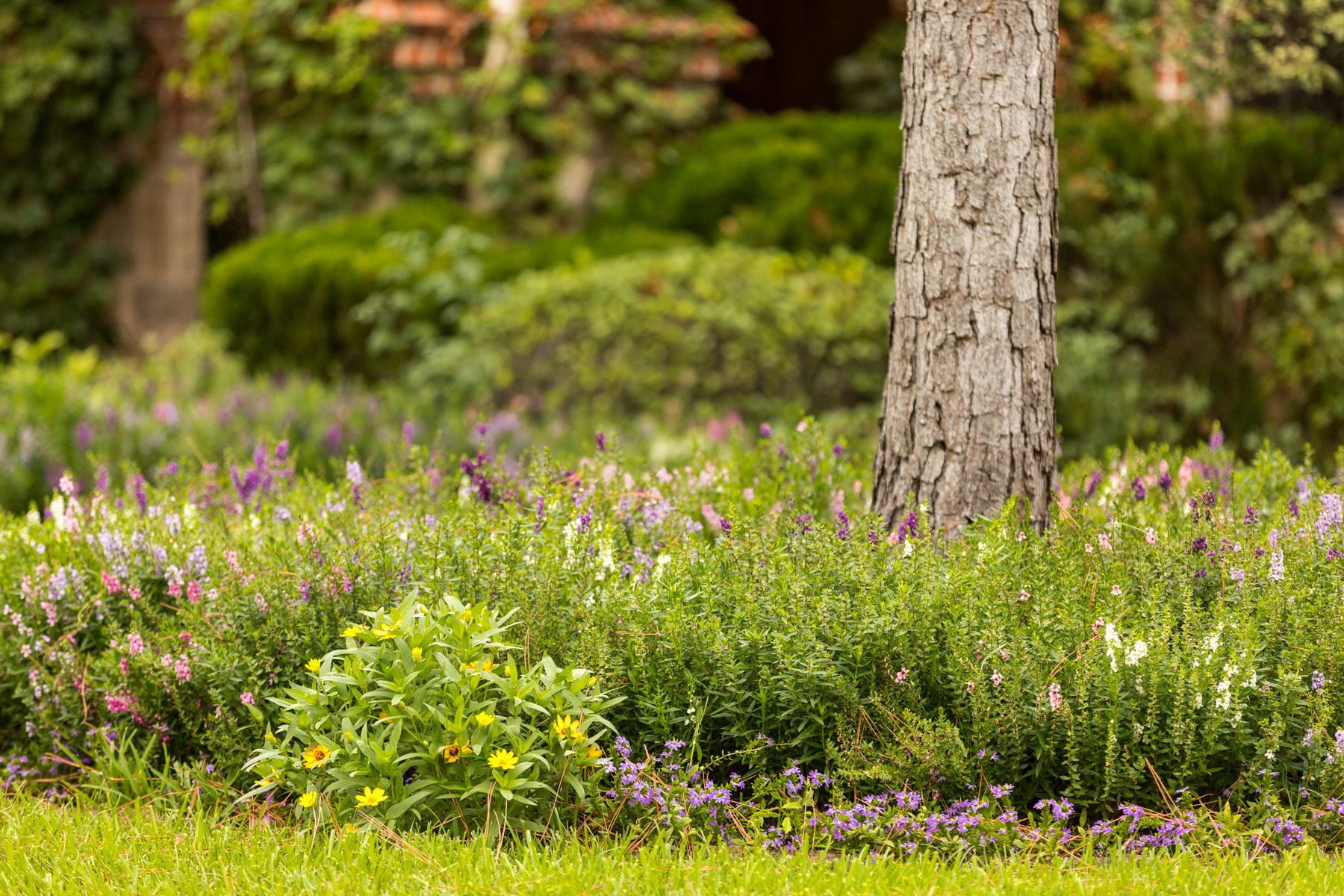
This is an easy fix that can still give you an attractive property while eliminating the ongoing struggle that you’ve been facing. The fact is, even some of the solutions that we’ve mentioned above might not be surefire fixes. If you feel as though you’re fighting a battle you’re never going to win, a grass alternative might be the best solution.
Up until now, our tips have assumed that you want to keep the tree or trees on your property. But if they aren’t important to you or providing a lot of value in your opinion, then having them removed would solve the problem. Then, you could re-sod in the areas that were struggling and start fresh with a new lawn.
Of course, some people don’t have the option to remove trees. You might live in an HOA where having one or more trees is a requirement. I understand this, as two trees per front yard are required where I live.
But another option might be to remove the large trees and replace them with smaller trees which aren’t going to create as much of a shade problem for you. This might require HOA approval but it can be another effective solution if trees are a necessity where you live.
At the end of the day, it comes down to finding the option that is best for you and your property. That solution is not going to be the same for everyone. It’s important to find a lawn and landscape professional who can offer you options while also taking your specific goals and long-term wants and needs into account.
We want you to have a property that you can be proud of and we’re here to help you achieve it in whatever way makes the most sense for you.
Ready to solve your grass growing problems at your Flower Mound, Highland Village, or Lewisville, TX home? Get a free quote and then enjoy the best lawn on the block without the worries!
These Stories on Lawn Care